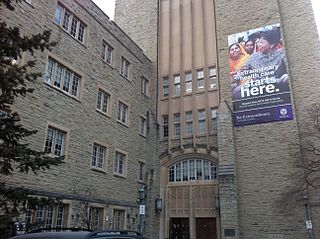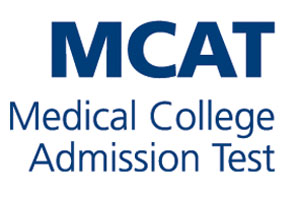Related Research Articles

Podiatry, or podiatric medicine and surgery, is a branch of medicine devoted to the study, diagnosis, and treatment of disorders of the foot, ankle and lower limb. The healthcare professional is known as a podiatrist. The US podiatric medical school curriculum includes lower extremity anatomy, general human anatomy, physiology, general medicine, physical assessment, biochemistry, neurobiology, pathophysiology, genetics and embryology, microbiology, histology, pharmacology, women's health, physical rehabilitation, sports medicine, research, ethics and jurisprudence, biomechanics, general principles of orthopedic surgery, plastic surgery, and foot and ankle surgery.

The Warren Alpert Medical School is the medical school of Brown University, located in Providence, Rhode Island. Originally established in 1811, it was the third medical school to be founded in New England after only Harvard and Dartmouth. However, the original program was suspended in 1827, and the four-year medical program was re-established almost 150 years later in 1972, granting the first MD degrees in 1975.
The Association of American Medical Colleges (AAMC) is a nonprofit organization based in Washington, D.C. that was established in 1876. It represents medical schools, teaching hospitals, and academic and scientific societies, while providing services to its member institutions that include data from medical, education, and health studies, as well as consulting. The AAMC administers the Medical College Admission Test and operates the American Medical College Application Service and the Electronic Residency Application Service. Along with the American Medical Association (AMA), the AAMC co-sponsors the Liaison Committee on Medical Education (LCME), the accrediting body for all U.S. MD-granting medical education programs.
A number of professional degrees in dentistry are offered by dental schools in various countries around the world.
The University of North Texas Health Science Center is a public academic health science center in Fort Worth, Texas. It is part of the University of North Texas System and was founded in 1966 as the Texas College of Osteopathic Medicine, with its first cohort admitted in 1970. UNT Health Science Center consists of six schools with a total enrollment of 2,329 students (2020–21).
Pre-medical is an educational track that undergraduate students mostly in the United States pursue prior to becoming medical students. It involves activities that prepare a student for medical school, such as pre-med coursework, volunteer activities, clinical experience, research, and the application process. Some pre-med programs providing broad preparation are referred to as “pre-professional” and may simultaneously prepare students for entry into a variety of first professional degree or graduate school programs that require similar prerequisites.

Medical education in the United States includes educational activities involved in the education and training of physicians in the country, with the overall process going from entry-level training efforts through to the continuing education of qualified specialists in the context of American colleges and universities.
The American Association of Colleges of Osteopathic Medicine (AACOM) is a non-profit organization that supports the 41 accredited colleges of osteopathic medicine (COMs) in the United States. These colleges are accredited to deliver instruction at 66 teaching locations in 35 states. In the current academic year, these colleges are educating more than 35,000 future physicians—25 percent of all U.S. medical students. Seven of the colleges are public and 34 are private institutions.

The Schulich School of Medicine and Dentistry is the combined medical school and dental school of the University of Western Ontario, a public university in London, Ontario, Canada
Medical school in the United States is a graduate program with the purpose of educating physicians in the undifferentiated field of medicine. Such schools provide a major part of the medical education in the United States. Most medical schools in the US confer upon graduates a Doctor of Medicine (MD) degree, while some confer a Doctor of Osteopathic Medicine (DO) degree. Most schools follow a similar pattern of education, with two years of classroom and laboratory based education, followed by two years of clinical rotations in a teaching hospital where students see patients in a variety of specialties. After completion, graduates must complete a residency before becoming licensed to practice medicine.
In Canada, a medical school is a faculty or school of a university that trains future medical doctors and usually offers a three- to five-year Doctor of Medicine (M.D.) or Doctor of Medicine and Master of Surgery degree. There are currently 17 medical schools in Canada with an annual admission success rate normally below 7.5%. As of 2021, approximately 11,500 students were enrolled in Canadian medical schools graduating 2,900 students per year.
Most physicians in the United States hold either the Doctor of Medicine degree (MD) or the Doctor of Osteopathic Medicine degree (DO). Institutions awarding the MD are accredited by the Liaison Committee on Medical Education (LCME). Institutions awarding the DO are accredited by the Commission on Osteopathic College Accreditation (COCA). The World Directory of Medical Schools lists both LCME accredited MD programs and COCA accredited DO programs as US medical schools. Foreign-trained osteopaths do not hold DO degrees and are not recognized as physicians in the United States or in other jurisdictions.
The American Association of Colleges of Osteopathic Medicine Application Service (AACOMAS) is a service run by the American Association of Colleges of Osteopathic Medicine through which prospective osteopathic medical students can apply to osteopathic medical schools in the United States that grant the Doctor of Osteopathic Medicine degree.
Doctor of Osteopathic Medicine is a medical degree conferred by the 38 osteopathic medical schools in the United States. DO and Doctor of Medicine (MD) degrees are equivalent: a DO graduate may become licensed as a physician or surgeon and thus have full medical and surgical practicing rights in all 50 US states. As of 2021, there were 168,701 osteopathic physicians and medical students in DO programs across the United States. Osteopathic medicine emerged historically from the quasi-medical practice of osteopathy, but has become a distinct and proper medical profession.
The Medical School Admission Requirements Guide (MSAR) is a suite of guides produced by the Association of American Medical Colleges (AAMC), which helps inform prospective medical students about medical school, the application process, and the undergraduate preparation. The MSAR staff works in collaboration with the admissions offices at each medical school and combined B.S./M.D. program to compile information about each school and program. This data originates from a number of sources including the:
The Texas Medical & Dental Schools Application Service (TMDSAS) is a service run by the University of Texas System through which prospective professional students can use a common application to apply to all public medical, dental and veterinary schools in the state of Texas.

The Medical College Admission Test is a computer-based standardized examination for prospective medical students in the United States, Australia, Canada, and the Caribbean Islands. It is designed to assess problem solving, critical thinking, written analysis and knowledge of scientific concepts and principles. Before 2007, the exam was a paper-and-pencil test; since 2007, all administrations of the exam have been computer-based.

The Heritage College of Osteopathic Medicine (OU-HCOM) is the medical school of Ohio University and the only osteopathic medical school in the U.S. state of Ohio. Its mission is to emphasize the practice of primary care and train physicians to serve Ohio, especially in the underserved Appalachian and urban areas of the state.

Physicians and surgeons play an important role in the provision of health care in Canada. They are responsible for the promotion, maintenance, and restoration of health through the study, diagnosis, prognosis, and treatment of disease, injury, and other physical and mental impairments. As Canadian medical schools solely offer the Doctor of Medicine (M.D.) or Doctor of Medicine and Master of Surgery degrees, these represent the degrees held by the vast majority of physicians and surgeons in Canada, though some have a Doctor of Osteopathic Medicine (D.O.) from the United States or Bachelor of Medicine, Bachelor of Surgery from Europe.
References
- ↑ Medical School Admission Requirements (MSAR) 2011-2012: The Most Authoritative Guide to U.S. and Canadian Medical Schools. Association of American Medical Colleges. 2010. p. 33. ISBN 1-57754-093-X.
- ↑ Medical School Admission Requirements (MSAR) 2011-2012: The Most Authoritative Guide to U.S. and Canadian Medical Schools. Association of American Medical Colleges. 2010. p. 127. ISBN 1-57754-093-X.
- ↑ "Application Instructions" (PDF). AACOMAS. 2012. Retrieved 12 August 2012.
- ↑ "The MCAT Should Be Optional". Inside Higher ED. 8 June 2020. Archived from the original on 2020-06-10. Retrieved 18 June 2020.